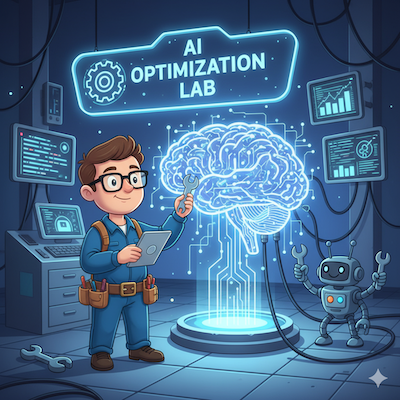Right now, the most prevalent generation of Ethernet for data centers is 400 Gbps, with the shift to 800 Gbps coming rapidly. It is expected that by 2025 there will be 25 million units of 800 Gbps shipped. Line speeds of 100G are used predominantly for 400 Gbps Ethernet – requiring 4 lanes each. Initially 800 Gbps will simply … Read More
 Ceva Unleashes Wi-Fi 7 Pulse: Awakening Instant AI Brains in IoT and Physical RobotsIn the rapidly evolving landscape of connected devices,…Read More
Ceva Unleashes Wi-Fi 7 Pulse: Awakening Instant AI Brains in IoT and Physical RobotsIn the rapidly evolving landscape of connected devices,…Read More Adding Expertise to GenAI: An Insightful Study on Fine-TuningI wrote earlier about how deep expertise, say…Read More
Adding Expertise to GenAI: An Insightful Study on Fine-TuningI wrote earlier about how deep expertise, say…Read More EDA Has a Value Capture Problem — An Outsider’s ViewBy Liyue Yan (lyan1@bu.edu) Fact 1: In the…Read More
EDA Has a Value Capture Problem — An Outsider’s ViewBy Liyue Yan (lyan1@bu.edu) Fact 1: In the…Read More WEBINAR: How PCIe Multistream Architecture is Enabling AI ConnectivityIn the race to power ever-larger AI models,…Read More
WEBINAR: How PCIe Multistream Architecture is Enabling AI ConnectivityIn the race to power ever-larger AI models,…Read More A Six-Minute Journey to Secure Chip Design with CaspiaHardware-level chip security has become an important topic…Read More
A Six-Minute Journey to Secure Chip Design with CaspiaHardware-level chip security has become an important topic…Read MoreAdvanced 2.5D/3D Packaging Roadmap
Frequent SemiWiki readers are no doubt familiar with the advances in packaging technology introduced over the past decade. At the recent International Electron Devices Meeting (IEDM) in San Francisco, TSMC gave an insightful presentation sharing their vision for packaging roadmap goals and challenges, to address the growing… Read More
Webinar: AMS, RF and Digital Full Custom IC Designs need Circuit Sizing
My career started out by designing DRAM circuits at Intel, and we manually sized every transistor in the entire design to get the optimum performance, power and area. Yes, it was time consuming, required lots of SPICE iterations and was a bit error prone. Thank goodness times have changed, and circuit designers can work smarter … Read More
White Paper: A Closer Look at Aging on Clock Networks
We all know that designers work hard to reach design closure on SOC designs. However, what gets less attention from consumers is the effort that goes into ensuring that these chips will be fully operational and meeting timing specs over their projected lifetime. Of course, this is less important for chips used in devices with projected… Read More
Podcast EP55: A New Year’s Perspective with Dan and Mike
Dan and Mike take some time to review 2021 – the events that led to growth, opportunities and challenges and a discussion of what lies ahead.
The views, thoughts, and opinions expressed in these podcasts belong solely to the speaker, and not to the speaker’s employer, organization, committee or any other group or individual.… Read More
DAC 2021 – Cliosoft Overview
It’s been awhile since I really looked at what Cliosoft has to offer in the EDA tool space, so at the 58th DAC I stopped by their exhibit booth on Tuesday to visit with Karim Khalfan, VP of Application Engineering, and Simon Rance, VP of Marketing. Their booth had all of the hot market segments listed: Automotive, 5G, IoT, AI, … Read More
Heterogeneous Integration – A Cost Analysis
Heterogeneous integration (HI) is a general term used to represent the diverse possibilities for die technology incorporated into advanced 2.5D/3D packaging. At the recent International Electron Devices Meeting (IEDM) in San Francisco, a team from Synopsys and IC Knowledge presented data from analyses of future potential… Read More
2D NoC Based FPGAs Valuable for SmartNIC Implementation
Smart network interface cards (SmartNICs) have proven themselves valuable in improving network efficiency. According to Scott Schweitzer, senior product manager at Achronix, it has been shown that SmartNICs can relieve up to – and perhaps beyond – 30% of the host processor’s loading. SmartNICs started out taking… Read More
Methodology for Aging-Aware Static Timing Analysis
At the recent Design Automation Conference, Cadence presented their methodology for incorporating performance degradation measures due to device aging into a static timing analysis flow. [1] (The work was a collaborative project with Samsung Electronics.) This article reviews the highlights of their presentation.
Background… Read More
Delivering Systemic Innovation to Power the Era of SysMoore
With the slowing down of Moore’s law , the industry as a whole has been working on various ways to maintain the rate of growth and advancements. A lot has been written up about various solutions being pursued to address specific aspects. The current era is being referred to by different names, SysMoore being one that Synopsys uses.… Read More










AI RTL Generation versus AI RTL Verification